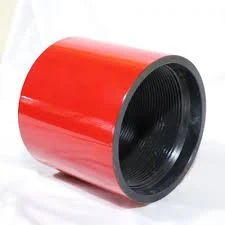- Afrikaans
- Albanian
- Amharic
- Arabic
- Armenian
- Azerbaijani
- Basque
- Belarusian
- Bengali
- Bosnian
- Bulgarian
- Catalan
- Cebuano
- Corsican
- Croatian
- Czech
- Danish
- Dutch
- English
- Esperanto
- Estonian
- Finnish
- French
- Frisian
- Galician
- Georgian
- German
- Greek
- Gujarati
- Haitian Creole
- hausa
- hawaiian
- Hebrew
- Hindi
- Miao
- Hungarian
- Icelandic
- igbo
- Indonesian
- irish
- Italian
- Japanese
- Javanese
- Kannada
- kazakh
- Khmer
- Rwandese
- Korean
- Kurdish
- Kyrgyz
- Lao
- Latin
- Latvian
- Lithuanian
- Luxembourgish
- Macedonian
- Malgashi
- Malay
- Malayalam
- Maltese
- Maori
- Marathi
- Mongolian
- Myanmar
- Nepali
- Norwegian
- Norwegian
- Occitan
- Pashto
- Persian
- Polish
- Portuguese
- Punjabi
- Romanian
- Russian
- Samoan
- Scottish Gaelic
- Serbian
- Sesotho
- Shona
- Sindhi
- Sinhala
- Slovak
- Slovenian
- Somali
- Spanish
- Sundanese
- Swahili
- Swedish
- Tagalog
- Tajik
- Tamil
- Tatar
- Telugu
- Thai
- Turkish
- Turkmen
- Ukrainian
- Urdu
- Uighur
- Uzbek
- Vietnamese
- Welsh
- Bantu
- Yiddish
- Yoruba
- Zulu
Casing Coupling Specifications and Dimensions for Optimal Performance and Compatibility
Understanding Casing Coupling Dimensions in Oil and Gas Industry
In the oil and gas industry, the term casing refers to the series of pipes that are inserted into a drilled hole to provide structural integrity, protection, and stability to the wellbore. A crucial aspect of casing is its coupling dimension, which is vital for ensuring a reliable and effective connection between different pipe sections. This article will delve into the importance of casing coupling dimensions, their standard specifications, and their implications on drilling operations.
Casing coupling dimensions are the specific measurements that determine how two or more segments of casing are connected. These dimensions include outer diameter (OD), inner diameter (ID), thread pitch, and coupling length. The precise standards for these dimensions are outlined by organizations such as the American Petroleum Institute (API), ensuring consistency and compatibility across various manufacturers and drilling operations.
One of the critical factors in casing coupling dimensions is the outer diameter. It must be designed to fit snugly with the inner diameter of the coupling, which serves as a connector piece between two casing strings. The tight fit is essential for preventing leaks and maintaining the integrity of the wellbore. Additionally, the thread pitch, which refers to the distance between threads in a screw-like fashion, must also match between the casing and couplings. This compatibility ensures that the segments can be screwed together securely, minimizing the risk of disconnections during drilling operations.
casing coupling dimensions

In addition to the mechanical aspects, casing coupling dimensions are also influenced by the specific geological conditions of the well being drilled
. Different formations have varying pressure and temperature conditions, which can affect the performance of casing. Manufacturers must take these factors into account when specifying dimensions, opting for thicker or higher-strength materials when necessary.Moreover, accurate casing coupling dimensions contribute significantly to the overall efficiency of drilling operations. A precise fit can reduce the risk of complications such as buckling or collapsing of the casing under extreme pressures. It also minimizes the time required to make connections between casing segments, thereby speeding up the drilling process and reducing costs. In an industry where time is of the essence and safety is paramount, the importance of these dimensions cannot be overstated.
Non-compliance with casing coupling dimensions can lead to catastrophic failures, such as oil spills or blowouts, which not only pose environmental risks but also threaten the safety of workers on-site. Therefore, adherence to established standards is critical for ensuring safe and effective drilling operations.
In conclusion, casing coupling dimensions play a vital role in the oil and gas industry, influencing both the safety and efficiency of drilling operations. Properly calibrated dimensions ensure secure connections between casing segments, protect against geological pressures, and enhance operational efficiency. As the industry continues to evolve with advancements in technology and drilling methods, maintaining stringent quality control over casing dimensions will remain a crucial focus for manufacturers and operators alike.
-
Well Casing Extension Couplings – Applications and InstallationNewsJun.06,2025
-
Types of Crossover Subs in Drilling & CompletionNewsJun.06,2025
-
Key Features of High-Quality Tubing Pup JointsNewsJun.06,2025
-
Installation and Maintenance Tips for Steel Couplings for PipeNewsJun.06,2025
-
How to Select the Right Pup Joint for Oil & Gas OperationsNewsJun.06,2025
-
Applications of Stainless Steel Pipe CouplingsNewsJun.06,2025







